Nighttime. A chance to relax in the comfort of one’s home. A chance to promenade around town. A chance to explore the riches of life outside the confines of work. The latter two appear to be the case for the men and women at Camp Patrick Henry during World War II. Rather importantly, this was a chance to escape the brutality of war and enter a state of unabashed flamboyance.
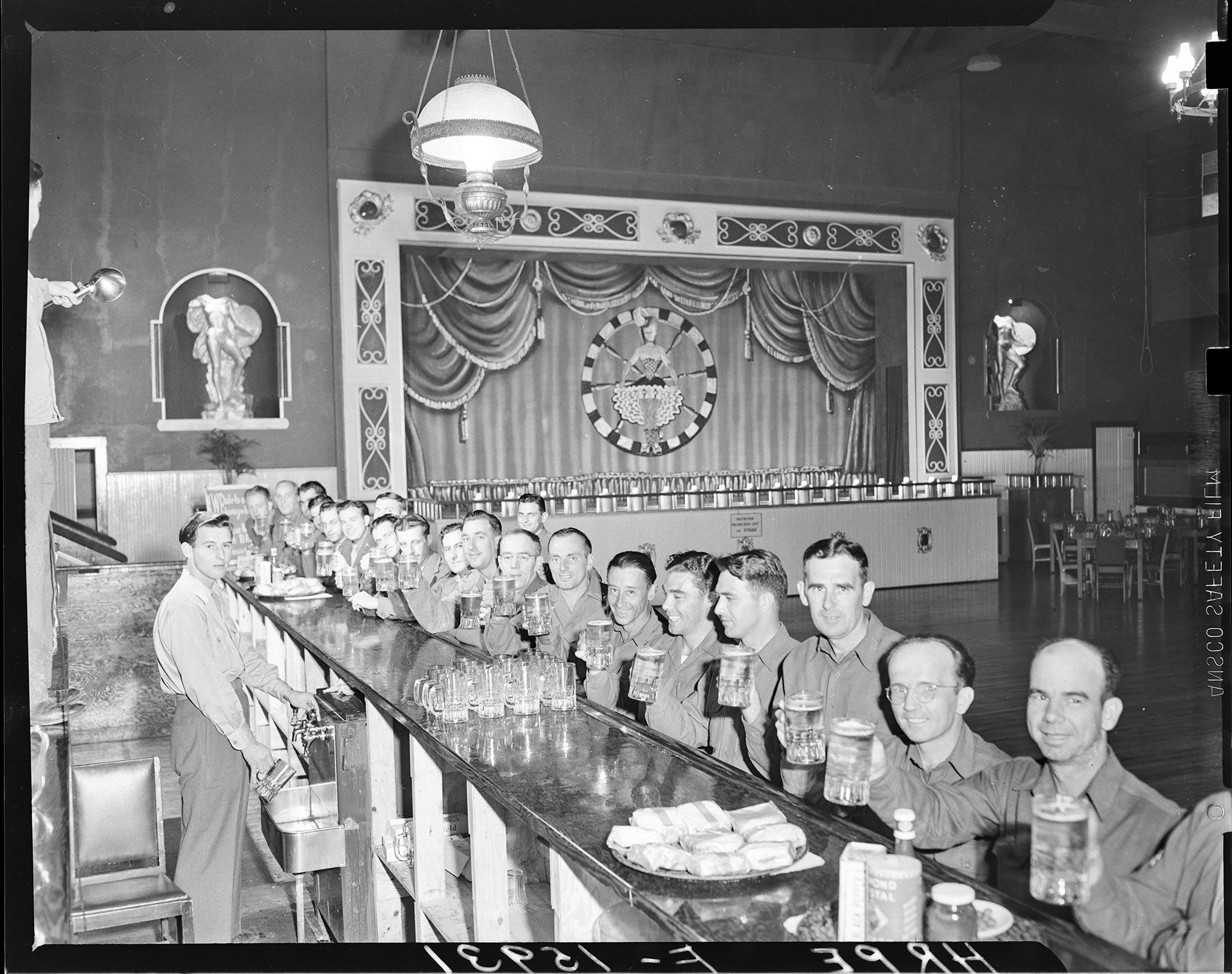
The images used in this blog offer a glimpse into the nightlife of Camp Patrick Henry, where men and women went to Last Chance, the nightclub adjoining the camp. These photographs are just a few from The Mariners’ vast Hampton Roads Port of Embarkation (HRPE) Collection. This collection spans upwards of 48,840 images taken during the establishment of the HRPE in 1942 until 1945. Similarly, Camp Patrick Henry (now the site of the Newport News/Williamsburg International Airport), is depicted in 1,900 images in the Museum Collection!
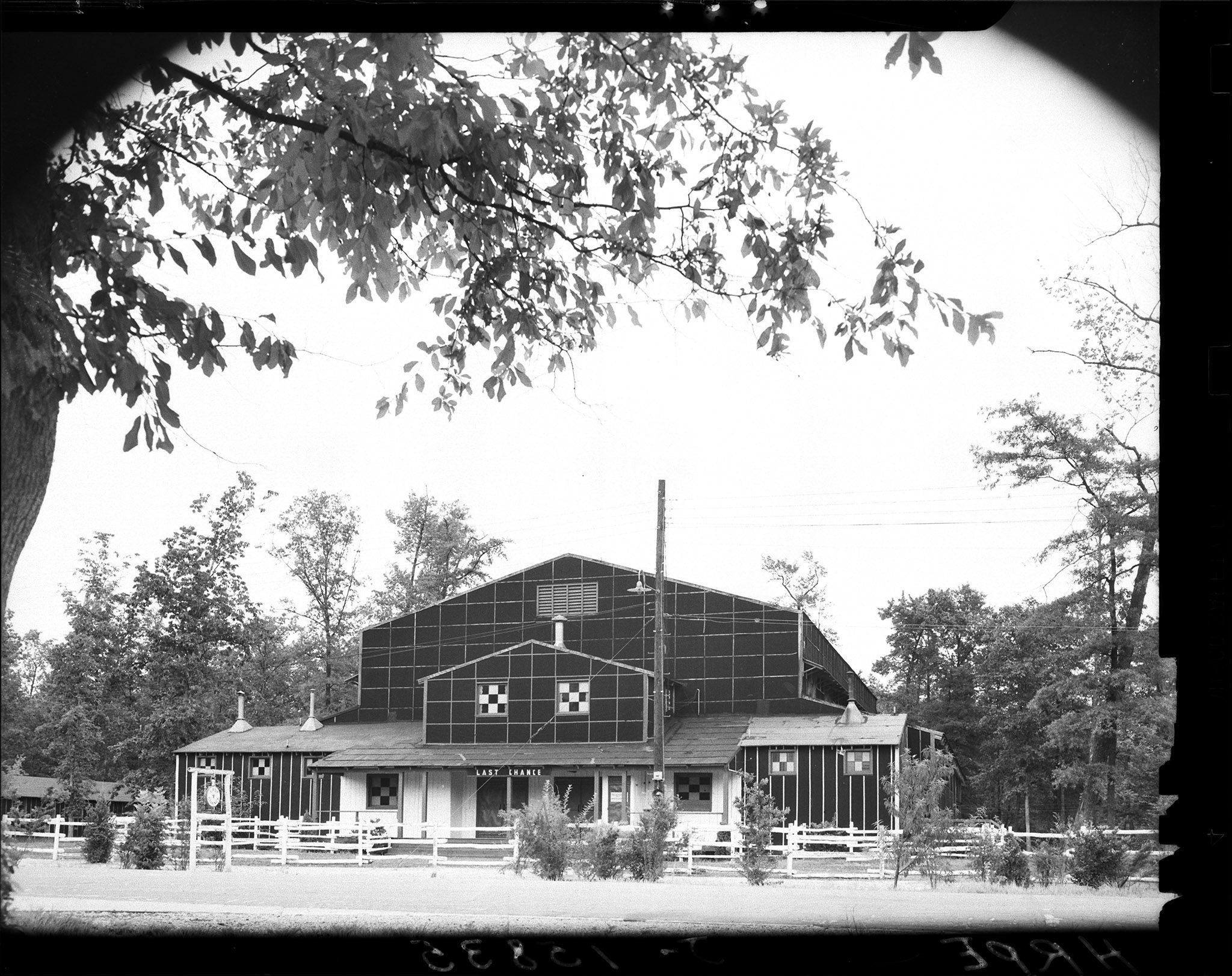
With the stage at the center of the hall. Flimsy wooden tables and chairs line one side of the atrium –easy to move in case of a big party– and the bar is at the opposite end. The hall is big enough to host hundreds, such as the Nurses Party hosted on September 15, 1945.
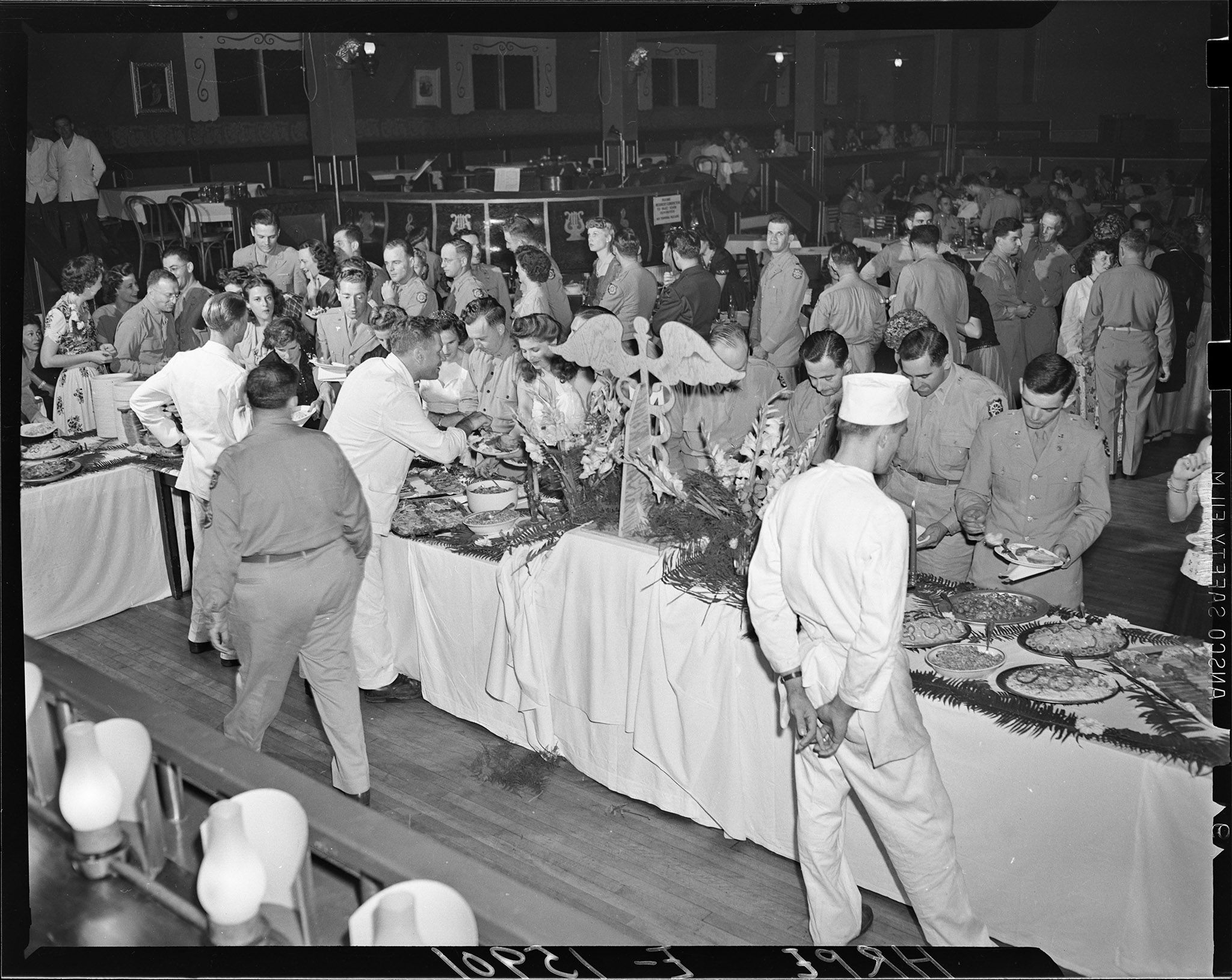
The band was a small but lively bunch. Mainly consisting of a jazz ensemble, a few brass instruments, and some woodwind instruments like clarinets. The band entertained regardless of event, status, or number of attendees. The band also had their own mezzanine to play out loud to the entire crowd.
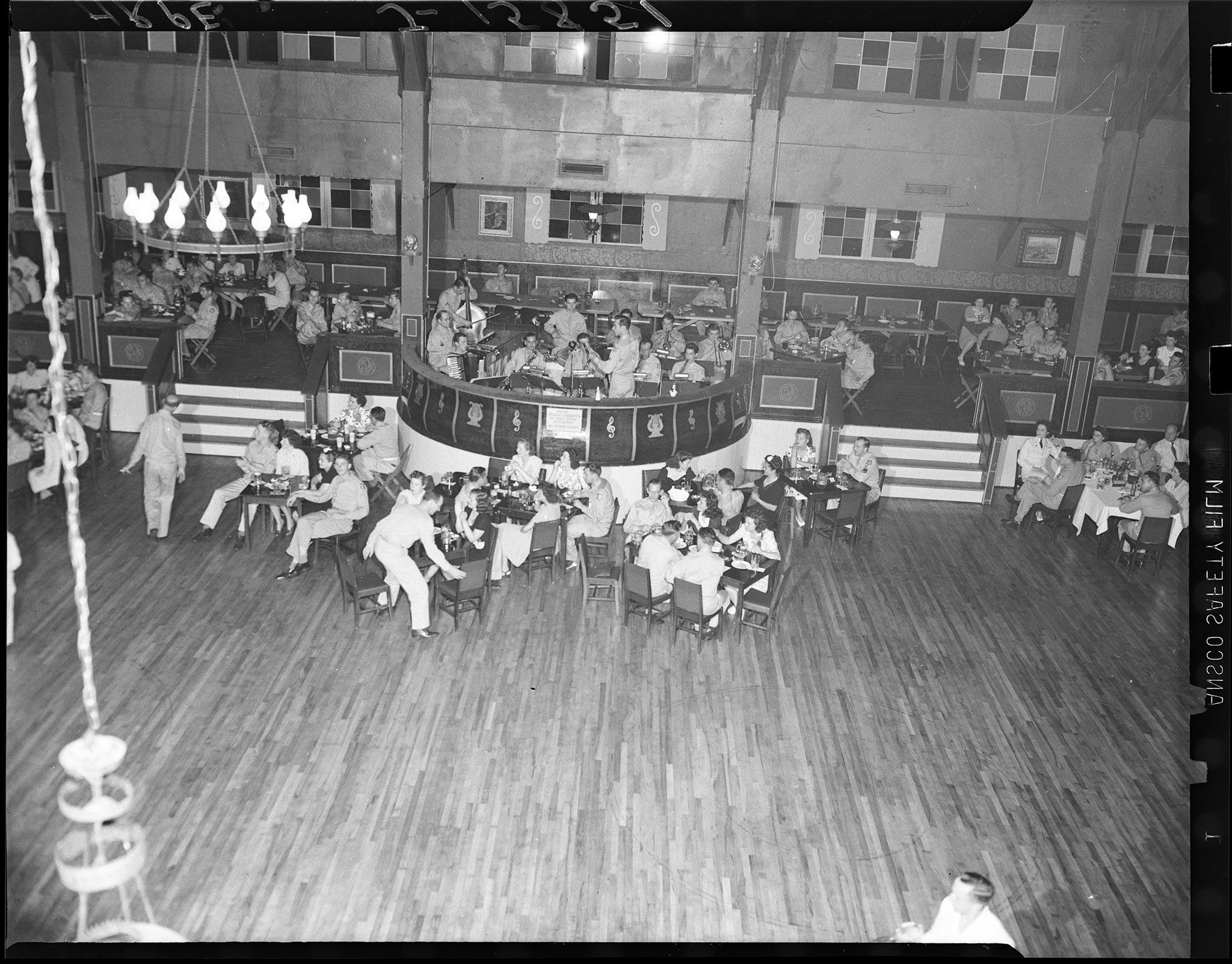
The music never stopped playing and the beer never stopped flowing. The ballroom was filled with cheerful chaos, everlasting exploits, and euphoric escapism. War was a trying time for hundreds of millions of men and women who committed months and years of their lives to serving in the armed forces. Everyone needs a chance for escape during times of stress. Soldiers and WACs alike would dance the night away unapologetically and many male soldiers would even take part in drag shows.
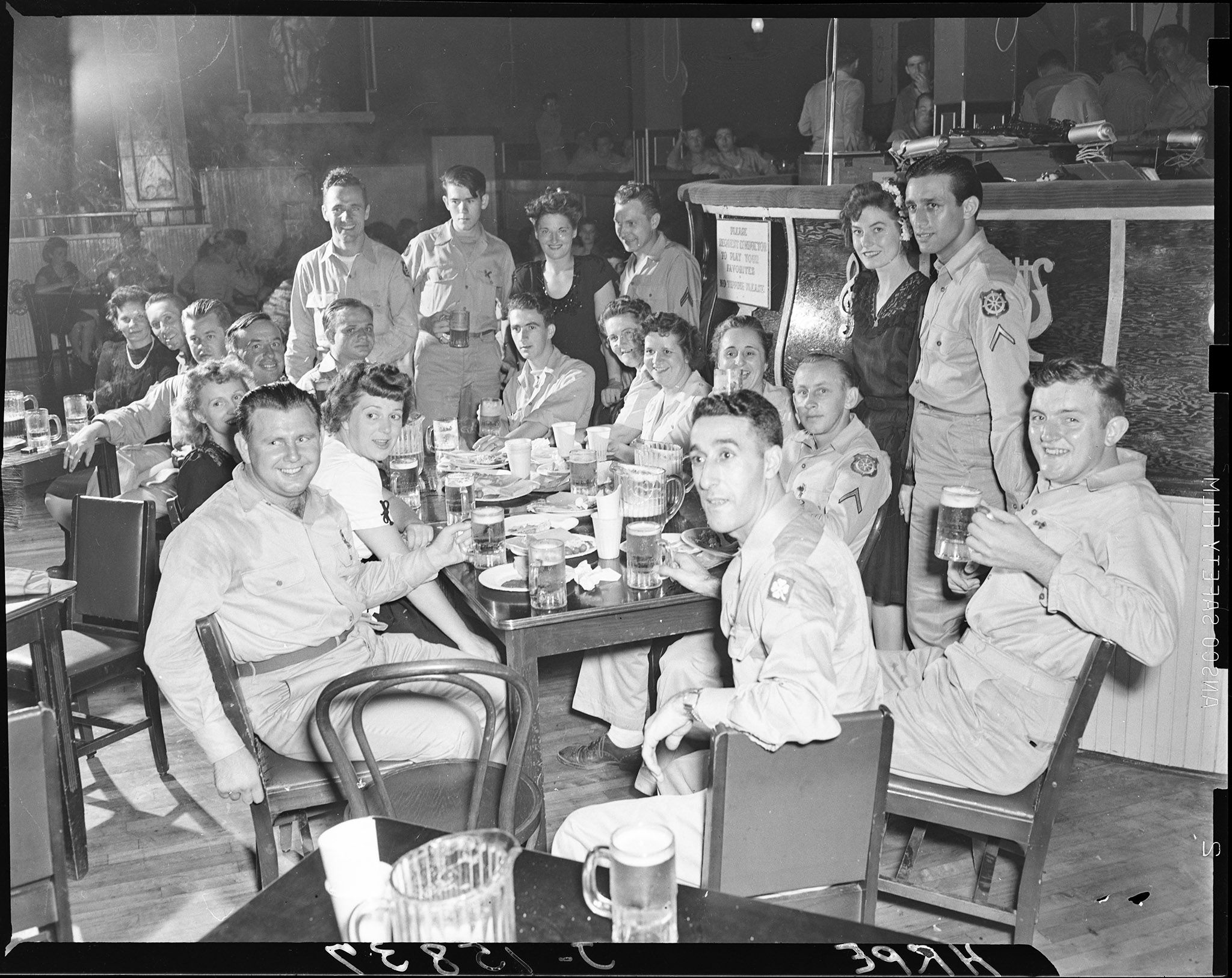
Drag entertainment has been an artform explored in a variety of expressions since the 1800s. Drag is a chance to dissociate from oneself and create a character completely new. As for the case of the Last Chance, it was also a welcome opportunity to liven the mood. While performance theater has been a known staple of wartime culture, even making commercial Hollywood appearances in movies like “White Christmas” and “This is the Army;” drag performance has taken to the underbelly of such performance theater.
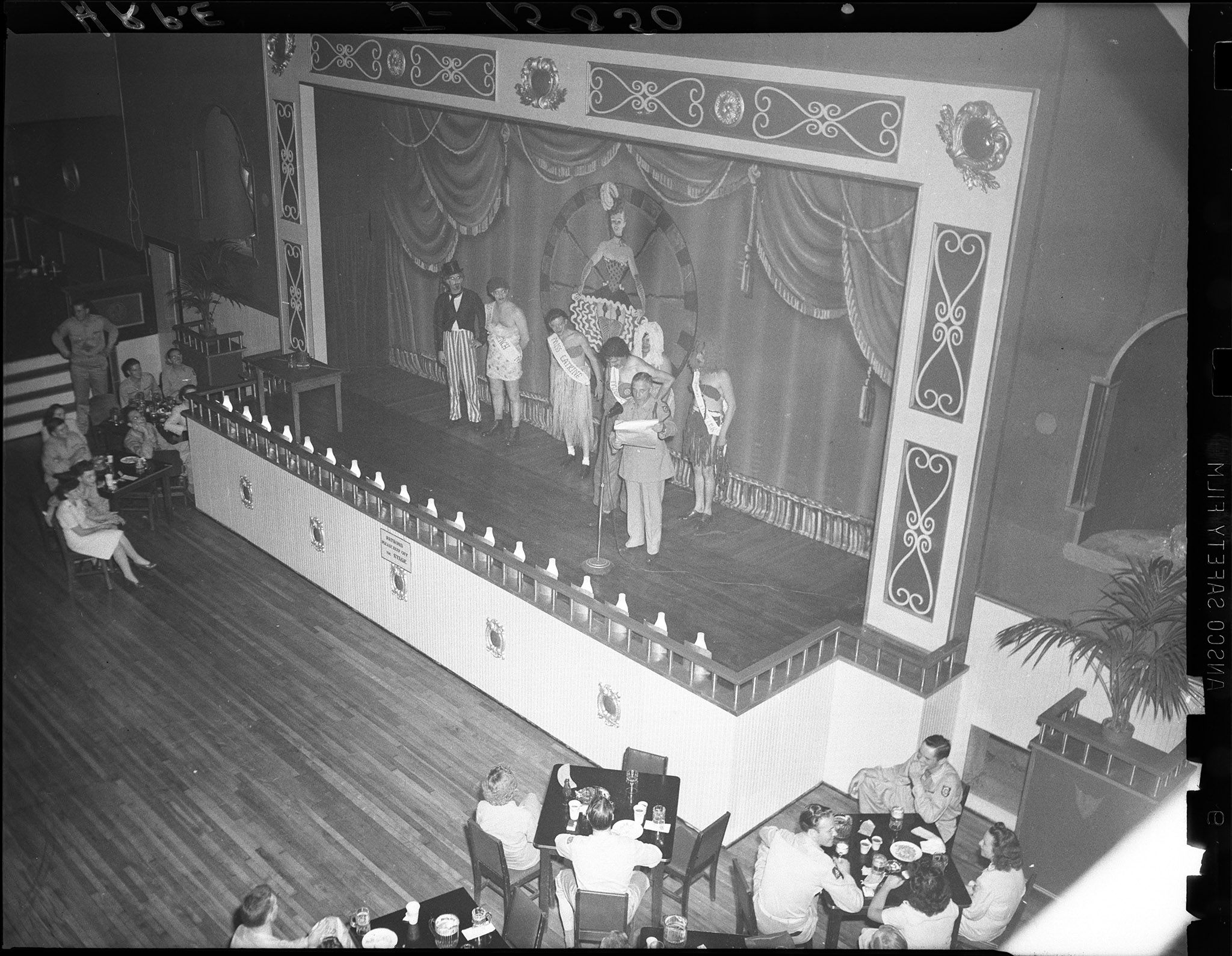
How drag shows worked at the Last Chance involved a selected soldier to portray the emcee, or Master of Ceremonies. Then male soldiers would arrive at the club with their best dressed outfits, makeup, and wigs to be voted on by the loudest cheers from the audience. Usually, women, part of the Women’s Army Corp, would do the makeup and hairstyling for the men taking part in the variety act. These performances granted all the more reason to stay late at Last Chance. Drag show nights were a chance for men who enlisted to feel free for a night. Being able to dress up in drag enhanced the camaraderie between soldiers, and it was a lively event for everyone involved. It also avoided any inappropriate treatment of the performers had women been performing.
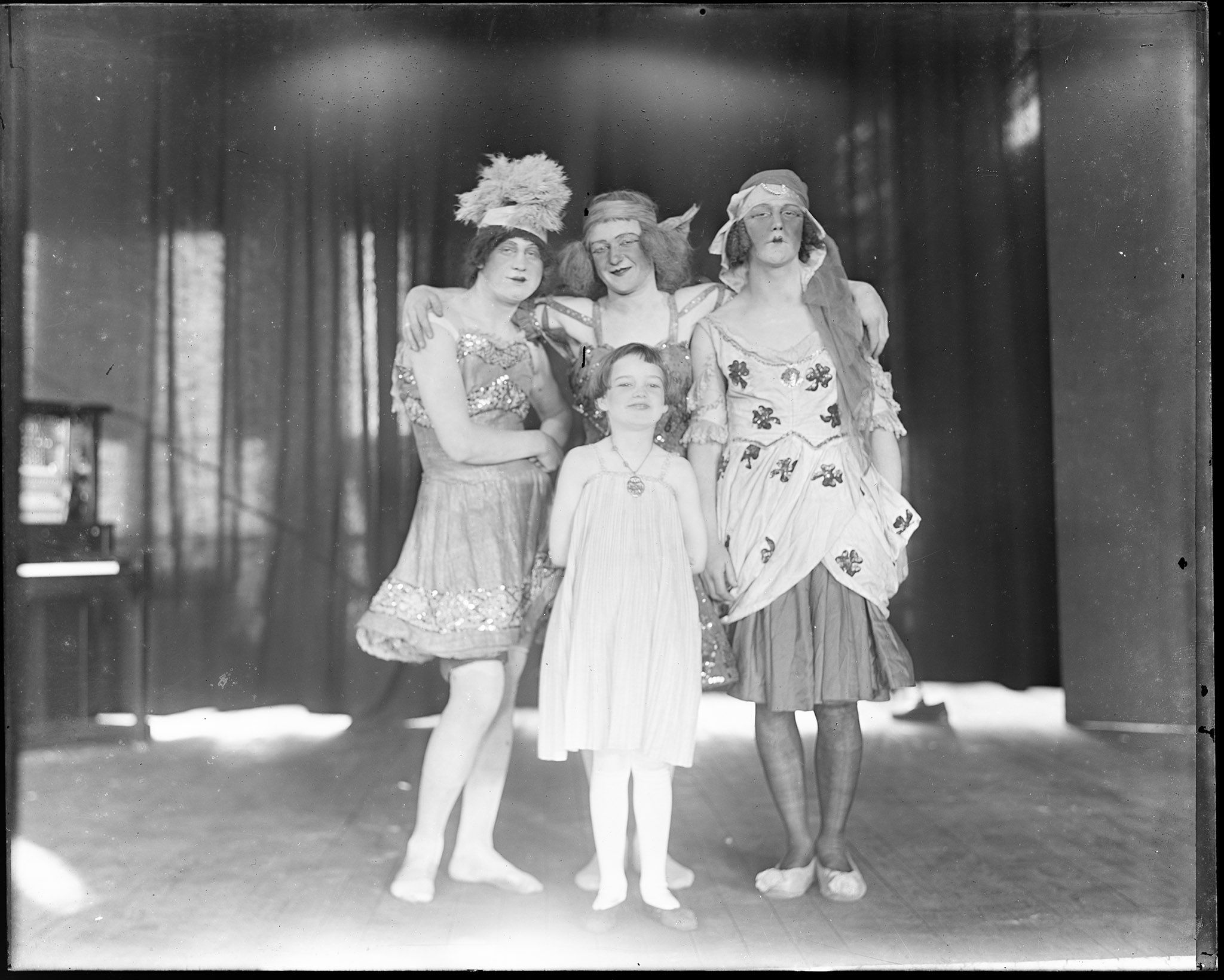
Drag shows during World War II were a chance to completely dissolve from the outside world in a form of pure campy entertainment. Soldiers donned clothing of the opposite sex to provide laughter and joy for all. It should also be mentioned that, although pure conjecture, drag performance was a way for men who were still identifying their sexuality to express themselves without being subjected to outright ridicule. Nonetheless, places like the Last Chance nightclub on the outskirts of Camp Patrick Henry was a place for soldiers and WACs to experience pure amusement.
If you enjoyed this post and want to learn more about the important role the Hampton Roads Port of Embarkation played in our region’s history, check out these other blogs: “Sisters in Arms,” “HRPE During WWII: Innovators in Aviation,” and “HRPE: The American Red Cross.”
Sources
Jura, Aaron. “GIs as Dolls: Uncovering the Hidden Histories of Drag Entertainment During Wartime.” The National WWII Museum. June 15, 2021. https://www.nationalww2museum.org/war/articles/drag-entertainment-world-war-ii.